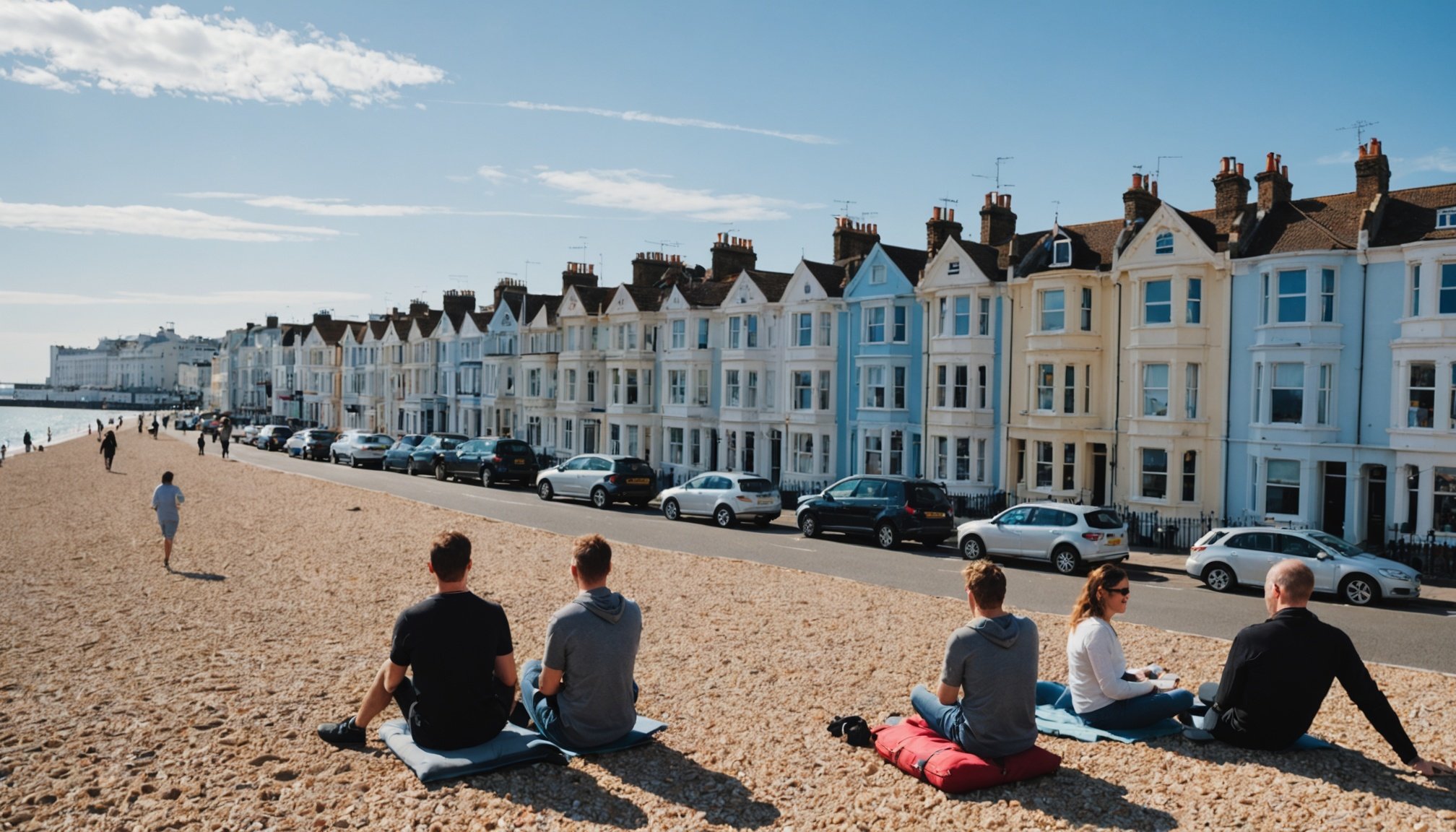Overview of the Digital Nomad Trend
The rise of digital nomads reflects a remarkable shift in how work and travel intertwine. Defined broadly, digital nomads are individuals who utilise technology to work remotely while living a nomadic lifestyle. This trend has been significantly enabled by the proliferation of reliable internet access and digital tools, which allow professionals to perform their duties from virtually anywhere in the world. The remote work model appeals not just for its flexibility, but also for the opportunity to explore the globe without compromising on career growth.
Statistics illustrate a rapid expansion of this lifestyle. According to recent studies, the number of remote workers embracing the digital nomad lifestyle has increased by over 50% in the past five years, highlighting its alluring potential. Technology plays a pivotal role, offering seamless communication, project management, and collaboration, which are crucial for the success of remote work. Platforms facilitating virtual meetings and cloud-based storage have become indispensable.
This might interest you : Essential factors to evaluate when investing in properties near uk universities
While trends in travel have traditionally been seasonal, the digital nomad lifestyle flattens these patterns, offering endless possibilities throughout the year. As organisations become more open to remote work, the digital nomad trend is expected to continue its upward trajectory, shaping the future of work culture globally.
The Short-Term Rental Market in Brighton
The Brighton rental market is flourishing, with a notable presence of short-term rentals driven by platforms like Airbnb. As one of the favoured destinations for travellers, Brighton offers a vibrant setting for both digital nomads and leisure seekers. This surge is reflected in key statistics, indicating high occupancy rates throughout the year and rental price variations that cater to differing budgets.
In the same genre : Key considerations for investing in real estate close to new train stations in the uk
Currently, Brighton’s short-term rental market exhibits competitive pricing. In comparison to other popular cities for digital nomads, Brighton boasts a balance of affordability and location appeal. This equilibrium attracts remote workers who thrive in diverse and engaging environments. The availability of a wide range of rental options augments the appeal further, providing flexibility in terms of length of stay and accommodation type.
The dynamic nature of trends in travel is also evident, as these rentals adapt swiftly to seasonal demand and demographic shifts. This adaptability positions Brighton as a trailblazer within the evolving landscape of temporary housing solutions.
However, it is critical to consider the interplay between the influx of digital nomads and the local property market. Continuous analysis of Airbnb data and rental patterns is essential for stakeholders to make informed decisions that benefit both landlords and the community.
Economic Impacts of Digital Nomads on Brighton’s Rentals
The influx of digital nomads in Brighton has significantly impacted the local economy, particularly through the short-term rental market. These itinerant professionals bring a surge of income to local landlords by increasing demand for rental properties. This demand often leads to a rise in rental prices, creating a lucrative opportunity for property owners. However, this increase in prices may also pose challenges for local residents seeking affordable housing.
As Brighton’s appeal as a destination for remote work grows, landlords are increasingly shifting their investment strategies towards short-term rentals. This shift represents a move away from traditional long-term leasing to capitalise on the financial benefits brought by digital nomads and tourists. As a result, the availability of long-term rental options for local residents can become strained, leading to potential housing shortages and pushing rental prices even higher.
Understanding the economic implications of this trend is essential for city planners and policymakers. By analysing Airbnb data and monitoring rental patterns, local authorities can develop strategies to balance the needs of digital nomads, landlords, and residents. Ensuring an equitable approach can help sustain Brighton’s vibrant rental market while protecting the interests of its permanent residents.
Social and Community Impact
The presence of digital nomads in Brighton is reshaping community dynamics due to their transient lifestyle. Their frequent comings and goings introduce new cultures and ideas, contributing to a more vibrant community. However, this transience may lead to a lack of long-term neighbourhood ties, affecting traditional community bonds.
Local businesses, especially in the service industries, experience notable effects from this trend. Digital nomads, with their distinct consumer needs, often frequent cafes, co-working spaces, and recreational facilities. This patronage boosts local economies and encourages business innovation to cater to this new demographic. Yet, this shift also applies pressure on existing enterprises to reinvent services continually.
From a resident perspective, there are mixed reactions. While some appreciate the economic benefits and cultural diversity brought by short-term tenants, others express concerns about the impact on rental prices and housing availability. The limitation in affordable housing options for locals remains a pressing issue, fuelling debates on sustainable community integration.
Resident perspectives highlight a crucial balance between welcoming digital nomads and safeguarding the community. Addressing these challenges effectively requires open dialogue and strategic measures to ensure that both nomads and residents mutually benefit.
Regulatory Responses to Short-Term Rentals
In Brighton, the local government has implemented various rental regulations to address the rise of short-term rentals. These policies aim to balance the demands of the digital nomad influx with the need to protect local residents’ interests. Regulators have introduced measures such as zoning laws, which restrict the number of properties that can be converted into short-term accommodations in certain areas. Policy changes like imposing occupancy limits and requiring permits for landlords have also been enacted to ensure compliance and community cohesion.
Recent proposals have suggested further tightening of regulations, such as implementing taxes on short-term rental income. This would align Brighton’s approach with that of other cities, like Amsterdam, which has set a cap on the number of days a property can be rented out annually. The aim is to mitigate housing shortages and control rental prices, limiting the strain on the local economy.
Brighton’s framework serves as an example in contrasting regulatory landscapes. In cities with less stringent measures, such as Lisbon, the growth of short-term rentals has outpaced regulatory responses, highlighting the importance of proactive governance. By maintaining an adaptable stance, Brighton seeks to foster a sustainable environment for both digital nomads and its permanent residents.
Benefits and Challenges for Local Residents
The influx of digital nomads brings both benefits and challenges to local communities. On the positive side, the increased presence of these remote workers fuels economic activity, benefiting local businesses such as cafes, co-working spaces, and entertainment venues. This new group of consumers generates diverse demands, encouraging businesses to innovate and expand their offerings to cater to global tastes. Consequently, residents experience a more vibrant community and access to a wider array of services.
However, this positive economic impact is not without its drawbacks. The challenges faced by residents are multifaceted—ranging from increased noise levels due to transient tenants to pressing affordability issues in the housing market. The popularity of short-term rentals often leads to heightened rental prices, making it difficult for local residents to find affordable housing.
Testimonials from residents highlight concerns about these disruptions to their daily lives and community structures. Many voice frustrations over diminished availability of long-term rental options and the associated cost hikes. Simultaneously, local businesses express mixed feelings—a boom in trade yet an ongoing need to adapt business models. Balancing these local impacts remains a pivotal issue for policymakers aiming to integrate digital nomads sustainably.
Expert Insights and Case Studies
The evolving landscape of the Brighton rental market warrants a closer look through the lens of expert opinions and case studies. Local real estate experts highlight how the influx of digital nomads is reshaping housing demands. Their preference for short-term rentals influences the availability of homes for long-term residents, pressing policymakers to deliver solutions.
Case studies reveal significant impacts in vibrant neighborhoods like North Laine and Kemp Town, where rental dynamics shift rapidly. These areas, popular with digital nomads, see properties snapped up quickly, often at premium prices. These insights underscore the necessity to balance the market’s profitability with community needs.
Interviews with key stakeholders further illuminate the complexities. Landlords express enthusiasm about the lucrative opportunities short-term rentals provide but acknowledge the regulatory constraints they navigate. Residents voice mixed reactions, balancing appreciation of increased economic activity with concerns over housing scarcity. City officials emphasize the ongoing challenge of accommodating digital nomads while ensuring residential stability.
Through expert insights and case studies, the interplay between evolving real estate practices and community sustainability becomes evident. Understanding these dynamics is crucial for developing policies that foster a thriving environment for both temporary visitors and permanent residents.











